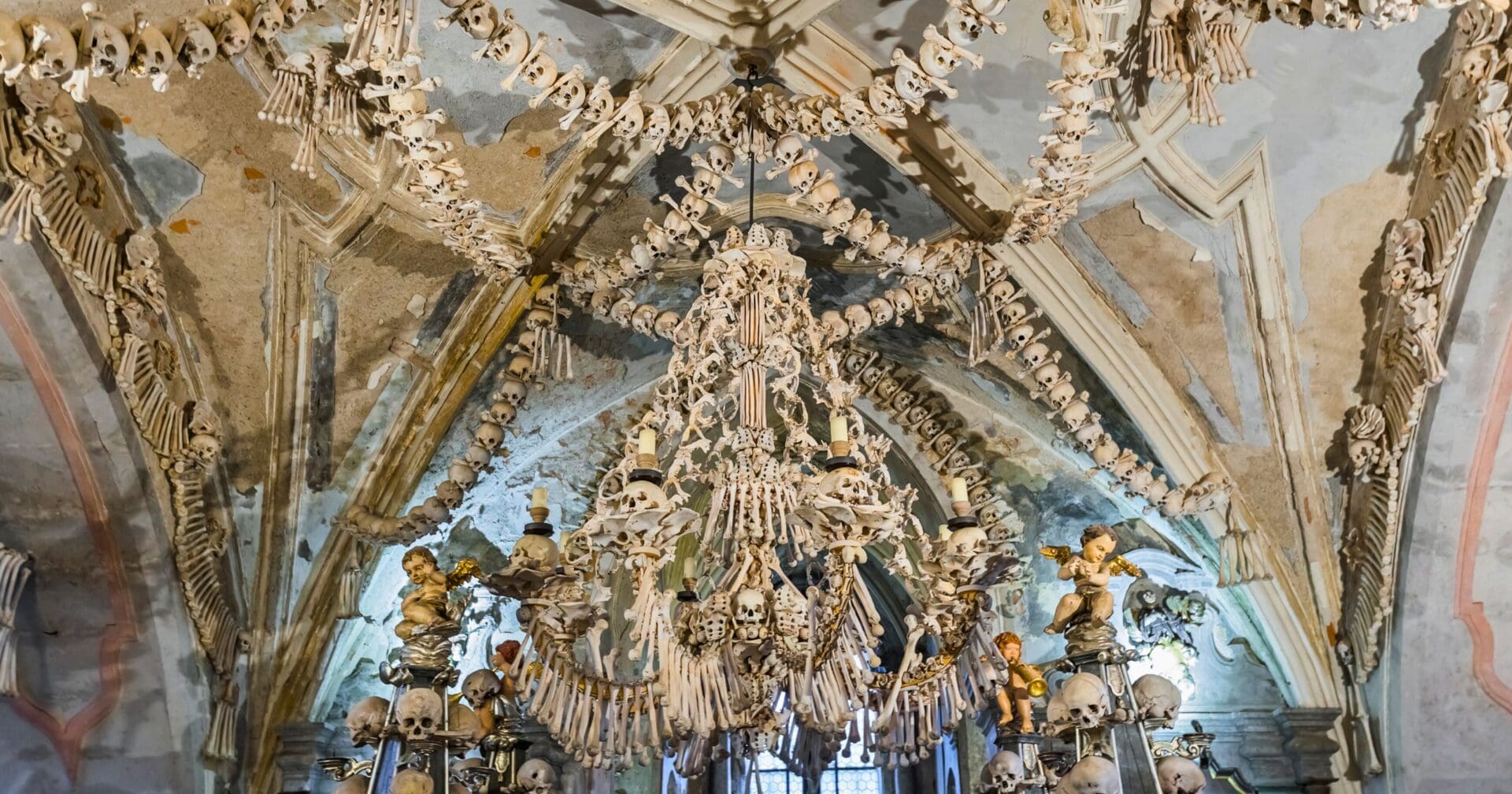The Catholic Church is home to some of the world’s greatest achievements in architecture. Constantly evolving over the past 2000 some years, the Church has produced many of the world greats: The Sistine Chapel, Saint Peter’s Basilica, and the Notre-Dame Cathedral to name just a handful of many. From Romanesque Abbeys, to Gothic Cathedrals or Renaissance Basilicas, there are plenty of design stylings to be had. Over the centuries there have also been some more eccentric designs as well. However, perhaps no church is more of a reminder of our mortality and unique than the Sedlec Ossuary, a church in the Czech Republic made with the bones of 70,000 skeletons.
The Sedlec Ossuary has its beginnings in the year 1278, when an abbot from a Cistercian monastery near the city of Sedlec, Czech Republic went to the Holy Land. When he returned, he brought with him a small amount of earth from Calvary, where Jesus Christ was crucified, and spread it over the abbey’s cemetery. News of this spread across Europe, and the cemetery became a popular burial site.
The Ossuary grew greatly in size during the mid 14th century, when a majority of it’s skeletons were added. After the Black Death spread throughout Europe killing millions of people, along with the casualties of the great Hussite Wars, many thousands had their final resting places at the ossuary. A Gothic Church was built on top of the ossuary the year 1400, with a vaulted upper level and the lower level to be used as a subterranean cemetery. However, the amount of bones contained in the church was simply too much, and in the year 1511 a half-blind monk of the Cistercian order was tasked with exhuming all the skeletons and arranging them within the chapel.
Today, the Sedlec Ossuary is known as the “Skull Church,” containing the remains of those who have been incorporated into the designs seen today. Among its top features are a bone chandelier, bone chalices, and a family crest. The Skull Church is one of the top tourist locations in the Czech Republic, drawing 200,000 visitors annually.
Photo credit: Tatiana Popova / Shutterstock.com














